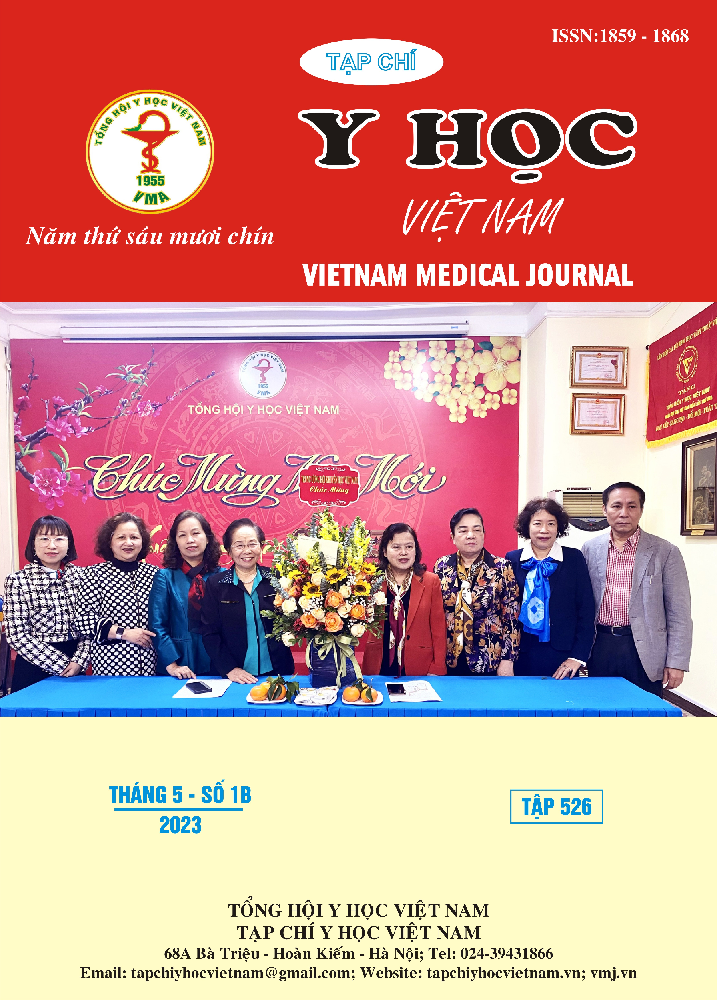APPLICATION OF THE ROTEM METHOD TO ASSESS COAGULATION DISORDERS IN PATIENTS WITH SEPSIS WITH PROLONGED PROTHROMBIN TIME AND ACTIVATED PARTIAL THROMBOPLASTIN TIME
Main Article Content
Abstract
Objectives: Comparison of coagulation status based on rotational thromboelastometry (ROTEM) in patients with sepsis with INR >1.2 or aPTTr >1.2 in the survivor group and non-survivor group admission to the intensive care unit. Subjects and methods: A cross-sectional study of patients with sepsis with INR >1.2 or aPTTr >1.2 admitted to the Intensive Care Unit of the University Medical Centre of Ho Chi Minh City from June 2020 to December 2021 was performed. Results: 95 patients were included from 161 patients with sepsis in the original study. The median age was 70 [61-80] and SOFA score was 7 [5-9]. The in-hospital mortality rate was 25.3%. The median INR and aPTTr were 1.42 [1.3-1.65] and 1.12 [4.1-6.8], respectively. Non-survivors had lower fibrinogen levels, higher blood lactate levels, and higher INR than the survivors, with p <0.05. The proportions of hypocoagulation, hypercoagulation, and normal coagulation on ROTEM in patients with INR >1.2 were 58.2%, 26.4%, and 29.7%, respectively. The proportions of hypocoagulation, hypercoagulation, and normal coagulation on ROTEM in patients with aPTTr >1.2 were 65.7%, 14.3%, and 28.6%, respectively. Hypocoagulation on ROTEM increased the mortality rate, but the difference was not statistically significant (p >0.05). Conclusion: Patients with sepsis or septic shock with prolonged INR or aPTTr may have hypercoagulation or normal coagulation based on ROTEM.
Article Details
Keywords
Sepsis, rotational thromboelastometry, ROTEM
References
2. Schmoch T, Möhnle P, Weigand MA, et al. The prevalence of sepsis-induced coagulopathy in patients with sepsis – a secondary analysis of two German multicenter randomized controlled trials. Annals of Intensive Care. 2023/01/12 2023;13(1):3. doi:10.1186/s13613-022-01093-7
3. Görlinger K, Dirkmann D, Hanke AA. Rotational Thromboelastometry (ROTEM®). In: Gonzalez E, Moore HB, Moore EE, eds. Trauma Induced Coagulopathy. Springer International Publishing; 2016:267-298.
4. Müller MC, Meijers JC, Vroom MB, Juffermans NP. Utility of thromboelastography and/or thromboelastometry in adults with sepsis: a systematic review. Crit Care. Feb 10 2014;18(1):R30. doi:10.1186/cc13721
5. Singer M, Deutschman CS, Seymour CW, et al. The Third International Consensus Definitions for Sepsis and Septic Shock (Sepsis-3). Jama. Feb 23 2016;315(8):801-10. doi:10.1001/jama.2016.0287
6. Muzaffar SN, Baronia AK, Azim A, et al. Thromboelastography for Evaluation of Coagulopathy in Nonbleeding Patients with Sepsis at Intensive Care Unit Admission. Indian J Crit Care Med. May 2017;21(5):268-273. doi:10.4103/ijccm.IJCCM_72_17
7. Lukas P, Durila M, Jonas J, Vymazal T. Evaluation of Thromboelastometry in Sepsis in Correlation With Bleeding During Invasive Procedures. Clin Appl Thromb Hemost. Sep 2018;24(6):993-997. doi:10.1177/1076029617731624
8. Lier H, Vorweg M, Hanke A, Görlinger K. Thromboelastometry guided therapy of severe bleeding. Essener Runde algorithm. Hamostaseologie. Dec 2013;33(1):51-61. doi:10.5482/hamo-12-05-0011


